calsfoundation@cals.org
Louisiana Purchase State Park
| Location: | Phillips, Lee, and Monroe counties |
| Size: | 37.5 acres |
Louisiana Purchase State Park conserves a rare headwater swamp, located on Little Cypress Creek, and a granite monument standing in the swamp’s interior. The monument marks the “initial point” established during an original survey of lands added to the United States as a result of the Louisiana Purchase. The monument was listed on the National Register of Historic Places on February 23, 1972, and on April 19, 1993, the National Park Service designated the point a National Historic Landmark.
The Louisiana Purchase of 1803 more than doubled the size of the United States and brought all the territory that would become Arkansas under U.S. ownership. In 1815, President James Madison ordered a survey to establish a system for distributing land to veterans of the War of 1812. On November 10, 1815, a party led by Prospect K. Robbins surveying a north-south line to be known as the fifth principal meridian crossed an east-west baseline that had been surveyed by a party led by Joseph C. Brown. The crossing of those lines became the “initial point” from which subsequent surveys of Louisiana Purchase lands originated. Robbins’s party marked two trees about eighteen inches in diameter as witness trees to delineate the crossing.
While re-surveying the boundary between Lee and Phillips counties in 1921, surveyors Tom Jacks and Eldridge P. Douglas of Helena (Phillips County) discovered the witness trees. The L’Anguille Chapter of the National Society of the Daughters of the American Revolution in Marianna (Lee County) placed a monument on the site, dedicating it in ceremonies held on October 27, 1926.
The state legislature authorized a state park on the site by Act 174 of 1961. Initial park development was accomplished with the aid of local citizens groups through the Green Thumb Program. In April 1977, the Arkansas Natural Heritage Commission added the swamp to the state Registry of Natural Areas and supplied funds for purchasing the park site. The Arkansas Department of Parks and Tourism granted the commission a conservation easement on the site, thus providing additional legal protection for its natural and historical features. Further development of park facilities was begun in 1977 and completed in 1980. A 950-foot boardwalk was constructed from the swamp’s edge to the monument; in June 1981, it was designated a National Recreation Trail by the U.S. Interior Department. Informational panels about the Louisiana Purchase, the survey, and the swamp were placed along its path. In anticipation of the Louisiana Purchase bicentennial in 2003, renovations were made to the boardwalk, signage, and entrance landscaping.
The park’s complex plant community includes species normally associated with swamps, such as swamp tupelo, bald cypress, black willow, and buttonbush, in proximity with upland species such as sweet gum, mulberry, Nuttall oak, and sassafras. Many bird species—such as the prothonotory warbler, the belted kingfisher, the pileated woodpecker, and the barred owl—can be observed in the surrounding swamp area.
The park lies at the end of Arkansas 362, two miles east of U.S. 49, about nineteen miles southeast of Brinkley (Monroe County), and approximately thirty miles northwest of Helena. It has no camping facilities or on-site staff. In 2003, an Arkansas State Parks construction crew made improvements to the boardwalk, which was built in the late 1970s. Panels relate the story of the Louisiana Purchase, the survey, and the swamp. In April 2021, the park reopened after renovations that included raising the granite monument and setting a new base, so that it would no longer be submerged in water occasionally, as well as installing a vault restroom facility.
For additional information:
Louisiana Purchase State Park. https://www.arkansasstateparks.com/parks/louisiana-purchase-state-park (accessed August 31, 2023).
“Louisiana Purchase Survey Marker.” National Register of Historic Places nomination form. On file at Arkansas Historic Preservation Program, Little Rock, Arkansas. Online at https://www.arkansasheritage.com/arkansas-historic-preservation-program (accessed August 31, 2023).
Schnedler, Jack. “Louisiana Purchase Survey Site Is History in a Swamp.” Arkansas Democrat-Gazette, September 8, 2020, p. 1D. Online at https://www.nwaonline.com/news/2020/sep/08/louisiana-purchase-survey-site-is-history-in-a/ (accessed August 31, 2023).
Staff of the Arkansas Department of Parks and Tourism
 Louisiana Purchase Historic State Park Marker
Louisiana Purchase Historic State Park Marker 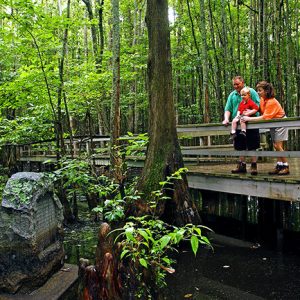 Louisiana Purchase Historic State Park
Louisiana Purchase Historic State Park 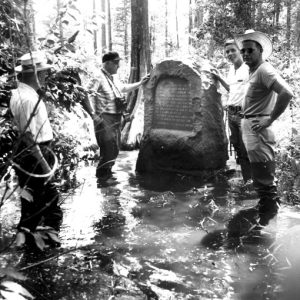 Louisiana Purchase Historic State Park
Louisiana Purchase Historic State Park 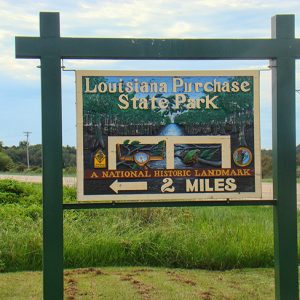 Louisiana Purchase State Park Entrance
Louisiana Purchase State Park Entrance 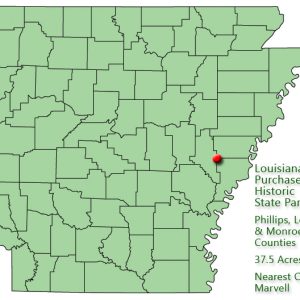 Louisiana Purchase Historic State Park: Park Location
Louisiana Purchase Historic State Park: Park Location 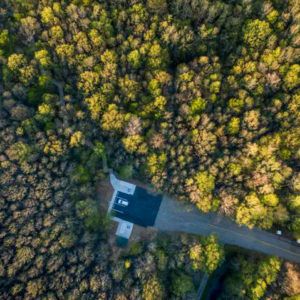 Louisiana Purchase Park
Louisiana Purchase Park 




Comments
No comments on this entry yet.